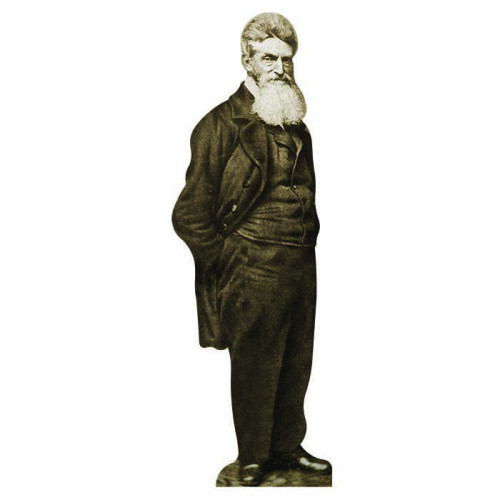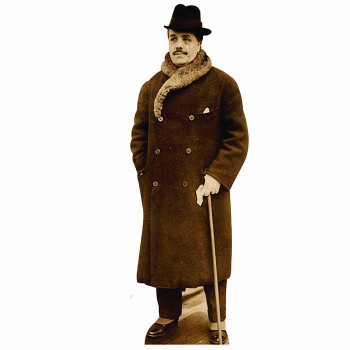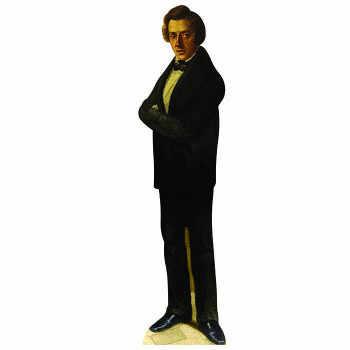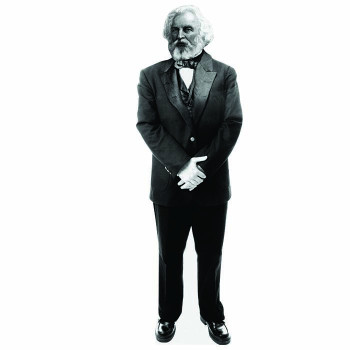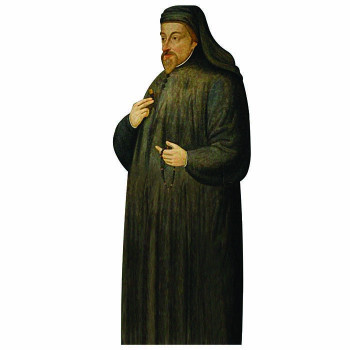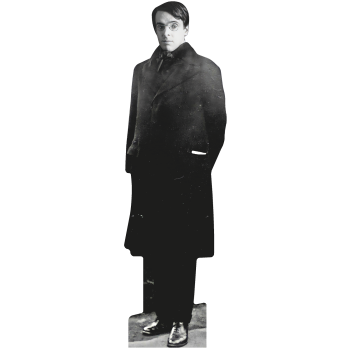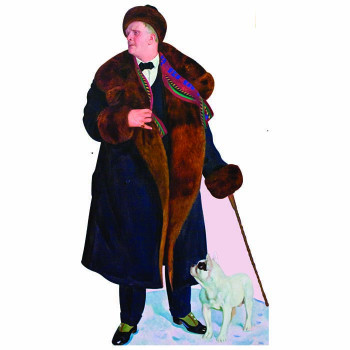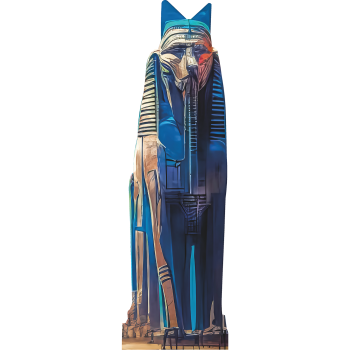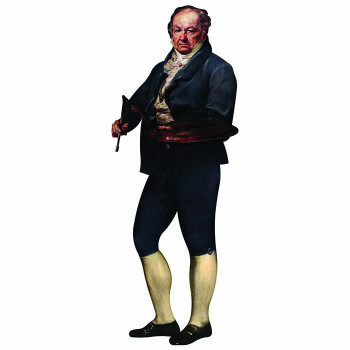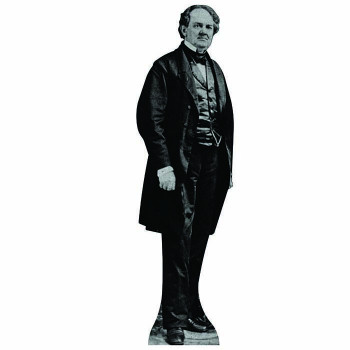JOHN BROWN CARDBOARD CUTOUT
-
$0.00
Available Options
74 x 25 inches. Our cardboard cutout of John Brown. All cardboard cutouts come folded and have an easel attached to the back to be self-standing. Items are printed and produced to order. Printing and processing takes up to 5 business days plus shipping time.
Introduction to John Brown
Celebrate the legacy of one of the most controversial and influential figures in American history with our lifesize cardboard cutout of John Brown. Perfect for historical displays, educational events, or as an inspiring addition to your home or office, this cutout captures the resolute and determined presence of John Brown, reflecting his profound impact on the abolitionist movement and American history.
Background of John Brown
John Brown was born on May 9, 1800, in Torrington, Connecticut. Raised in a deeply religious family, Brown developed a strong sense of morality and a fierce opposition to slavery from an early age. His father, Owen Brown, was an abolitionist who instilled in him the belief that slavery was a sin against God and humanity.
Brown moved frequently throughout his life, engaging in various businesses and farming endeavors. Despite his struggles with financial stability, his commitment to the abolitionist cause never wavered. Brown became involved in the Underground Railroad, helping escaped slaves find freedom in the North. He also became a conductor on the Railroad, assisting many to escape bondage.
In the 1850s, Brown's efforts to fight against slavery became more militant. He moved to Kansas to support the anti-slavery cause in what became known as "Bleeding Kansas," a violent conflict between pro-slavery and anti-slavery settlers. Brown and his followers engaged in several skirmishes, including the Pottawatomie Massacre in 1856, where they killed five pro-slavery settlers in retaliation for attacks on anti-slavery settlers.
Brown's most famous and controversial action came in 1859 when he led a raid on the federal arsenal at Harpers Ferry, Virginia (now West Virginia). His goal was to incite a slave rebellion and establish a stronghold of free African Americans in the mountains of Virginia. The raid failed, and Brown was captured, tried, and executed for treason on December 2, 1859. Despite its failure, the raid intensified national tensions over slavery and is considered a key event leading to the Civil War.
Cultural Impact of John Brown
John Brown's impact on American history is profound and complex. As a fervent abolitionist, Brown's actions and beliefs were both celebrated and condemned. He is often depicted as a martyr and a hero in the fight against slavery, but also as a radical and a fanatic who resorted to violence to achieve his goals.
Brown's raid on Harpers Ferry is one of the most significant events in the lead-up to the Civil War. It galvanized the abolitionist movement in the North and heightened fears of a slave uprising in the South. The raid and Brown's subsequent trial and execution brought national attention to the moral and political crisis of slavery, deepening the divide between North and South.
Brown's legacy has been the subject of extensive historical debate and interpretation. To some, he is a symbol of righteous rebellion against an immoral institution. His willingness to sacrifice his life for the cause of freedom has inspired generations of activists and reformers. To others, his use of violence and his radical methods make him a more controversial figure, raising questions about the limits of moral action in the face of injustice.
Culturally, Brown has been portrayed in various forms of media, including literature, film, and music. He has been the subject of numerous biographies and historical studies, reflecting ongoing interest in his life and impact. Songs like "John Brown's Body" became popular during the Civil War, cementing his place in American cultural memory.
John Brown's commitment to abolition and his willingness to take direct action against slavery continue to resonate as powerful symbols of moral conviction and the struggle for justice. His life and legacy provoke critical reflection on the means and ends of social and political activism.
This cutout of John Brown celebrates his remarkable contributions and enduring legacy as a key figure in the abolitionist movement. It serves as a tribute to his unwavering commitment to the cause of freedom, his impact on American history, and his significant role in shaping the cultural heritage of the United States.
- Brand: Historical Cutouts
- Product Code:H79096
- Availability:In Stock
LEARN MORE ABOUT OUR AVAILABLE MATERIALS

LIFE SIZE HISTORICAL CUTOUTS
We have been the leading historical based cutout supplier for nearly 10 years. We have worked with many schools, museums, and colleges across the country to provide stunning graphics from hsitory. Historical Cutouts are available in 3 materials and come contour cut with an easel to be self standing. Click below to learn more about each material and our cutout process.
Learn More
LIFE SIZE HISTORICAL WALL DECALS
All of our historical figures are available as a life size wall decals. Vinyl wall decal orders come ready to apply with squeegie and instructions. Having trouble? Check out our how to youtube video. Our graphics are printed on tear resistant PhotoTex Vinyl using our high definition 4 color plus white printing process.
Learn More
HISTORICAL ACRYLIC CUTOUTS
Desktop Legends are a smaller version of our life size cutotus printed on 3/16th" acrylic. All of our historical cutouts are also available as a desktop legend. These acrylic statuettes come in two sizes, 8" and 12". If you would like to learn more please click below.
Learn MoreRELATED PRODUCTS
-
Sergei Diaghilev Cardboard Cutout
72 x 25 inches. Our cardboard cutout of Sergei Diaghilev. All cardboard cutouts come folded and have..
Frederic Chopin Cardboard Cutout
66 x 17 inches. Our cardboard cutout of Frederic Chopin. All cardboard cutouts come folded and have ..
Henry Wadsworth Longfellow Cardboard Cutout
67 x 21 inches. Our cardboard cutout of Henry Wadsworth Longfellow. All cardboard cutouts come folde..
Geoffrey Chaucer Cardboard Cutout
64 x 26 inches. Our cardboard cutout of Geoffrey Chaucer. All cardboard cutouts come folded and have..
William Butler WB Yeats Irish Poet Author
Cardboard cutout of William Butler Yeats. He was a writer, poet, and dramatist. He was one of 20th-c..
Feodor Chaliapin Cardboard Cutout
69 inches. Our cardboard cutout of Feodor Chaliapin. All cardboard cutouts come folded and have an e..
Vladimir Nemirovich-Danchenko Cardboard Cutout
72 x 26 inches. Our cardboard cutout of Vladimir Nemirovich-Danchenko. All cardboard cutouts come fo..
Fantasy Cat Sphinx Statue Egyptian Civilization Neon Cardboard Cutout Standee Standup
60x22 inch cardboard cutout of a regal fantasy cat sphinx statue to really strengthen your cat?s ego..
Painter Francisco Goya Cardboard Cutout
68 inches. Our cardboard cutout of Painter Francisco Goya. All cardboard cutouts come folded and hav..
P.T. Barnum Cardboard Cutout
70 x 22 inches. Our cardboard cutout of P. T. Barnum. All cardboard cutouts come folded and have an ..
H79525 Earnest Hemingway Whom The Bell Tolls Cardboard Cutout Standee Standup
62x37 inch cardboard cutout of the man whom the bell tolls!..
Captain Space Lantern Super Hero Man Flying Cardboard Cutout Standee Standup
Cardboard cutout of our Captain Space Lantern Super Hero Man flying in space. He sure don't need no ..

